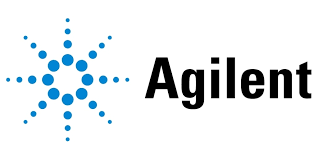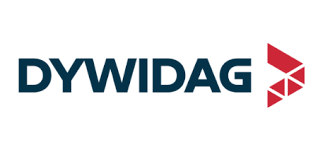Food Intolerance Products Market Report
Published Date: March 16, 2024 | Report Code: food-intolerance-products
Food Intolerance Products Market Size, Share, Industry Trends and Forecast to 2033
This market report analyzes the Food Intolerance Products sector, offering insights and data projections from 2023 to 2033. It covers market size, trends, segmentation, regional analysis, and competitive landscape to provide a comprehensive view of the industry.
| Metric | Value |
|---|---|
| Study Period | 2023 - 2033 |
| 2023 Market Size | $15.30 Billion |
| CAGR (2023-2033) | 6.8% |
| 2033 Market Size | $30.07 Billion |
| Top Companies | General Mills, Nestlé, Kraft Heinz, Dr. Schär, So Delicious Dairy Free |
| Last Modified Date | 02 June 2025 |
Food Intolerance Products Market Report (2023 - 2033)
Food Intolerance Products Market Overview
Customize Food Intolerance Products Market Report market research report
- ✔ Get in-depth analysis of Food Intolerance Products market size, growth, and forecasts.
- ✔ Understand Food Intolerance Products's regional dynamics and industry-specific trends.
- ✔ Identify potential applications, end-user demand, and growth segments in Food Intolerance Products
What is the Market Size & CAGR of Food Intolerance Products market in 2023?
Food Intolerance Products Industry Analysis
Food Intolerance Products Market Segmentation and Scope
Tell us your focus area and get a customized research report.
Food Intolerance Products Market Analysis Report by Region
Europe Food Intolerance Products Market Report:
Europe remains a commanding market with a size expected to grow from USD 5.06 billion in 2023 to USD 9.94 billion by 2033. Strong regulatory frameworks regarding food safety and labeling, alongside an informed consumer base, drives demand across European countries.Asia Pacific Food Intolerance Products Market Report:
The Asia-Pacific region's Food Intolerance Products market is expected to grow from USD 2.90 billion in 2023 to USD 5.71 billion by 2033. The rising awareness about food intolerances and increasing disposable incomes are driving this growth. Countries like Australia and Japan are particularly seeing advances in product availability and consumer acceptance.North America Food Intolerance Products Market Report:
The North American market for Food Intolerance Products is projected to expand from USD 5.06 billion in 2023 to USD 9.94 billion by 2033. The high prevalence of food intolerances and a strong trend towards healthy eating emphasize the growth potential in this region, particularly in the U.S. and Canada.South America Food Intolerance Products Market Report:
In South America, the market is smaller but poised for growth, increasing from USD 0.51 billion in 2023 to USD 1.00 billion in 2033. Factors such as expanding health food trends and increasing urbanization are contributing to this growth.Middle East & Africa Food Intolerance Products Market Report:
The Middle East and Africa market is estimated to increase from USD 1.77 billion in 2023 to USD 3.48 billion by 2033. Growing health consciousness and evolving dietary preferences are key factors driving market growth in this region.Tell us your focus area and get a customized research report.
Food Intolerance Products Market Analysis By Product Type
Global Food Intolerance Products Market, By Product Type Market Analysis (2024 - 2033)
The Food Intolerance Products market by product type is dominated by gluten-free products, which account for USD 8.26 billion in 2023 and are expected to reach USD 16.24 billion by 2033, reflecting a share of approximately 54%. Lactose-free products, valued at USD 3.52 billion in 2023, are projected to grow to USD 6.92 billion, maintaining a 23% market share. Nut-free and egg-free products are also significant niches with projected growth reaching USD 3.18 billion and USD 3.73 billion respectively by 2033.
Food Intolerance Products Market Analysis By Review
Global Food Intolerance Products Market, By Customer Review Market Analysis (2024 - 2033)
High-rated products dominate the market, representing an impressive 68.08% share in 2023, projected to remain the same through 2033. The preference for quality and effectiveness in products for food intolerances reinforces the importance of consumer reviews in shaping market preferences.
Food Intolerance Products Market Analysis By Distribution Channel
Global Food Intolerance Products Market, By Distribution Channel Market Analysis (2024 - 2033)
The online distribution channel is leading in sales, increasing from USD 12.86 billion in 2023 to USD 25.27 billion by 2033. It accounts for an overwhelming 84% share of the market in 2023. Offline channels are also growing, from USD 2.44 billion to USD 4.81 billion, but at a slower rate, capturing only 15.98% share.
Food Intolerance Products Market Analysis By Age Group
Global Food Intolerance Products Market, By Age Group Market Analysis (2024 - 2033)
The children segment is leading with a market size of USD 10.42 billion in 2023, expected to rise to USD 20.47 billion by 2033 (68.08% share). The adult and seniors segments show consistent growth, with adults projected to grow from USD 4.35 billion to USD 8.55 billion, while seniors will grow from USD 0.53 billion to USD 1.05 billion.
Food Intolerance Products Market Analysis By Ingredient
Global Food Intolerance Products Market, By Key Ingredients Market Analysis (2024 - 2033)
A significant trend is noted in the use of plant-based ingredients, leading the segment with a size of USD 10.42 billion in 2023 and expected to rise to USD 20.47 billion by 2033. Synthetic ingredients account for USD 4.35 billion and are projected to grow significantly, while natural ingredients remain niche, with a projected growth from USD 0.53 billion to USD 1.05 billion.
Food Intolerance Products Market Trends and Future Forecast
Tell us your focus area and get a customized research report.
Global Market Leaders and Top Companies in Food Intolerance Products Industry
General Mills:
General Mills offers a broad portfolio of gluten-free products, leading to significant market share in the food intolerance sector. Their commitment to sustainability and innovation in food formulations sets them apart.Nestlé:
Nestlé has successfully tapped into the lactose-free and gluten-free segments with popular brands, focusing on customer health and nutrition.Kraft Heinz:
The Kraft Heinz Company is known for its extensive range of food intolerance products, emphasizing quality and consumer preferences in their new launches.Dr. Schär:
Dr. Schär specializes in gluten-free products and has built a strong reputation in health food markets, catering specifically to those with gluten sensitivities.So Delicious Dairy Free:
This company focuses on lactose-free and plant-based dairy alternatives, contributing significantly to the growth of lactose-free products.We're grateful to work with incredible clients.









Related Industries
FAQs
What is the market size of food Intolerance Products?
The global food intolerance products market is projected to reach $15.3 billion by 2033, growing at a CAGR of 6.8% from its current size. This growth reflects increasing awareness and demand for specialized dietary products.
What are the key market players or companies in this food Intolerance Products industry?
Key players in the food intolerance products market include notable brands that specialize in gluten-free, lactose-free, and nut-free products. Companies continually innovate to meet consumer needs, ensuring growth and a competitive landscape.
What are the primary factors driving the growth in the food Intolerance Products industry?
Major growth drivers include rising health awareness, an increasing number of individuals diagnosed with food intolerances, and a growing demand for specialized dietary products. The trend towards healthy eating also significantly contributes to market expansion.
Which region is the fastest Growing in the food Intolerance Products?
The fastest-growing region for food intolerance products is projected to be Europe, with a market growth from $5.06 billion in 2023 to $9.94 billion by 2033, indicating strong demand and consumer engagement.
Does ConsaInsights provide customized market report data for the food Intolerance Products industry?
Yes, ConsaInsights offers customized market report data tailored to the food intolerance products industry, enabling businesses to acquire specific insights relevant to their operational needs and market strategies.
What deliverables can I expect from this food Intolerance Products market research project?
Deliverables from the food intolerance products market research project include comprehensive reports detailing market size, growth forecasts, competitor analysis, regional dynamics, and consumer trends, providing crucial insights for strategic decision-making.
What are the market trends of food Intolerance Products?
Key market trends include an increasing shift towards plant-based products, a rise in online sales channels particularly for gluten-free and lactose-free offerings, and continued innovation in product development reflecting consumer preferences.
